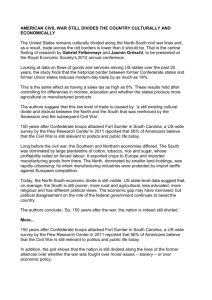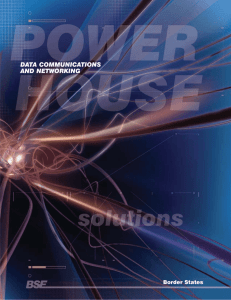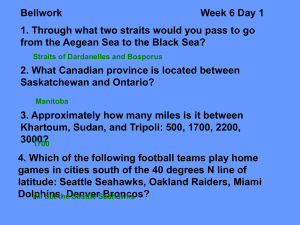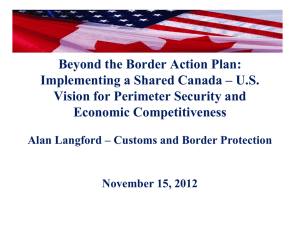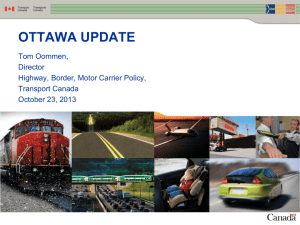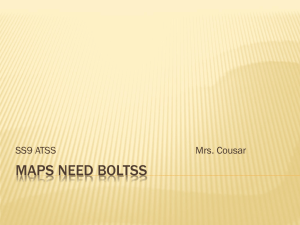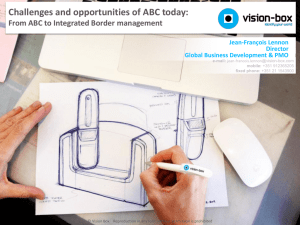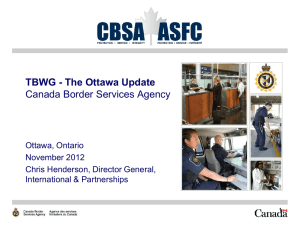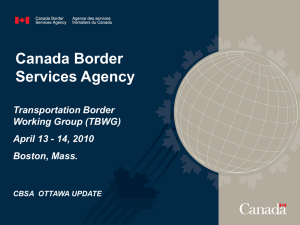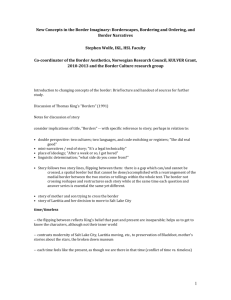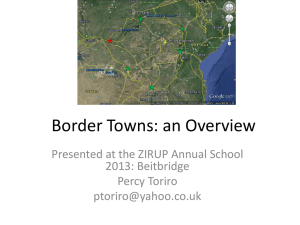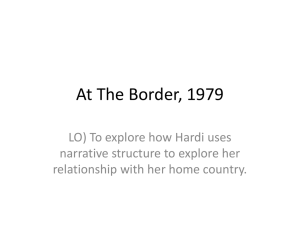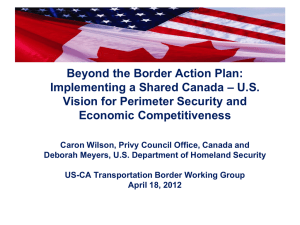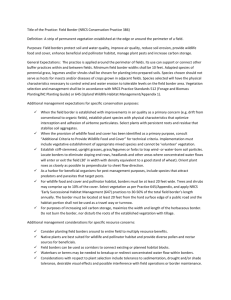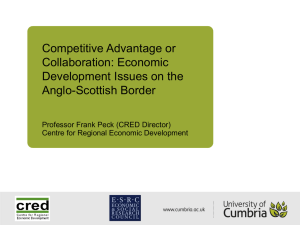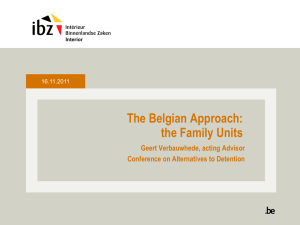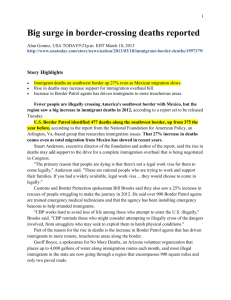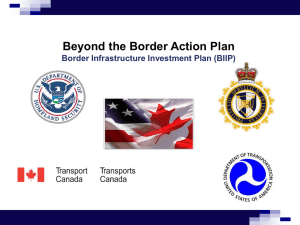International Border Crossing - Electronic Screening System
advertisement
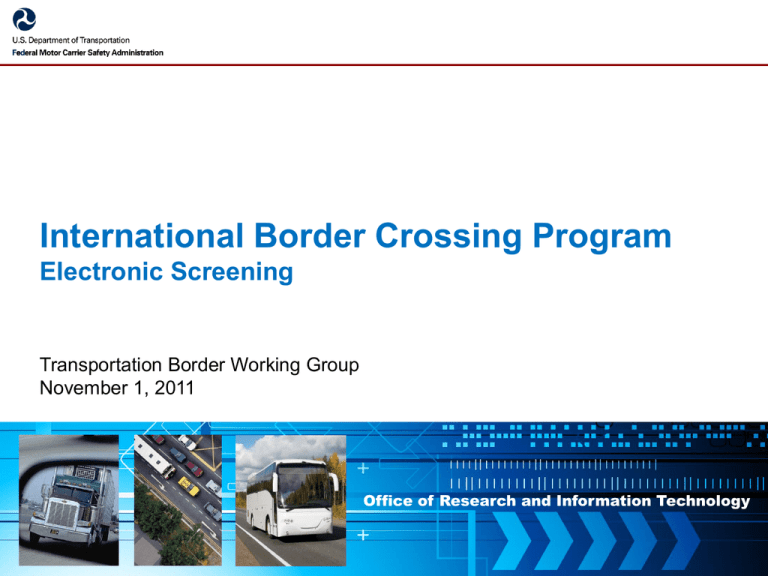
International Border Crossing Program Electronic Screening Transportation Border Working Group November 1, 2011 Office of Research and Information Technology FMCSA Priorities and Goals Priorities Raise the bar Maintain high safety standards Remove high-risk carriers Strategic Plan 2006-2011 Advance Electronic Safety and Credential Monitoring to Facilitate International Traffic Flow at our Nation's Borders Office of Research and Information Technology 1 Safety and Compliance Requirements FMCSA Driver Credentials Equipment fitness Federal operating authority status Proof of insurance/appropriate coverage Border State Vehicle registration status Size and weight limitations Other State-specific requirements Office of Research and Information Technology 2 Determining Which Vehicles to Inspect Current screening is manual Limits coverage Time consuming Based on: Inspectors’ knowledge of specific carriers Visual check of obvious physical defects Limited conversation with driver Random selection Office of Research and Information Technology 3 International Border Screening Program Phase I – Demonstration of Concept – Completed 2007 Phase II – Analysis of Demonstration – Completed 2009 Phase III – Field Operational Test – Started June 2011 Awarded contract to Battelle Memorial Institute. Team includes: Texas Transportation Institute, Kentucky Transportation Center, University of Washington DOT’s Volpe Center supporting project management and acquisition and installation of required equipment at border sites Office of Research and Information Technology 4 Enhancing the Screening Process International Border Crossing (IBC) e-Screening concept Use of radio frequency identification device (RFID) transponders to identify drivers and vehicles RFID technology selected because 90% of trucks entering the U.S. are equipped Office of Research and Information Technology 5 Phase I – IBC E-Screening Demonstration Demonstrated at Santa Teresa, NM port of entry - Low volume (120-140 trips per day) - Staffed 80% of time - Ideal environment for testing and evaluation 14 carriers participated Vehicles screened to validate: - Currency of CVSA decal and truck registration - Federal operating authority status of carrier - Current insurance - Driver tags/commercial drivers license status Over 5,500 transponder reads in demo Office of Research and Information Technology 6 Major Findings Technology performed reliably (99% accurate) Reduced processing time for selection for inspection (1 sec vs. 15 min.) Increased number of vehicles subject to inspection (237/month baseline vs. 965/month during demo) Focused limited enforcement resources Reduces processing for compliant vehicles Office of Research and Information Technology 7 Limitations of Concept Currency of CVSA decal On-site enrollment is time consuming and limiting No way to identify trailer electronically verify compliance All drivers did not have ID cards Screening decision displayed only inside facility Office of Research and Information Technology 8 Phase II – Analyses of Demonstration Utilizing International Trade Data System (ITDS) shared by Customs and Border Protection (CBP) with FMCSA Identify carrier, truck, trailer, and driver Eliminate need for on site enrollment Tied to other data sources Screen on more than 20 factors of interest Requirements analysis in seven border States Analysis of 20 ports of entry Developed system requirements Office of Research and Information Technology 9 Phase III – Field Operational Test Deployment and testing of IBC e-Screening system at 4 border locations Development of partnerships with States and Customs and Border Protection Conduct outreach with stakeholders to deploy system nationally Ensure user needs are met Office of Research and Information Technology 10 Questions? Chris Flanigan Office of Analysis, Research, and Technology (202) 385-2384 Chris.Flanigan@dot.gov Office of Research and Information Technology 11




